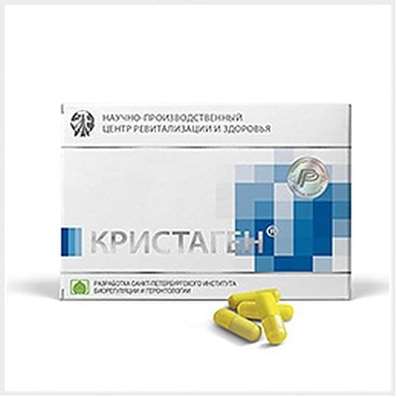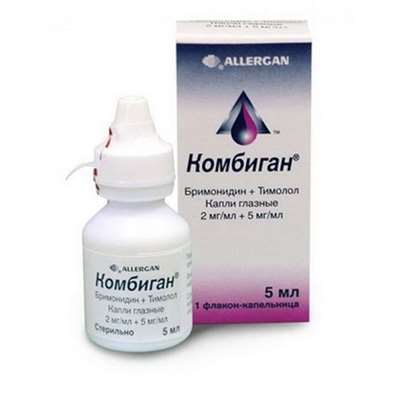Instruction for use: Latanoprost
I want this, give me price
Latin name of the substance Latanoprost
Latanoprostum (genus. Latanoprosti)
Chemical name
Isopropyl- (Z) -7 [(1R, 2R, 3R, 5S) 3,5-dihydroxy-2 - [(3R) -3-hydroxy-5-phenylpentyl] cyclopentyl] -5-heptenoate
Gross formula
C26H40O5
Pharmacological groups of substance Latanoprost
Prostaglandins, thromboxanes, leukotrienes and their antagonists
Ophthalmic products
Nosological classification (ICD-10)
H40.0 Glaucoma suspected: Severe elevation of intraocular pressure; Hypertension of the eye; Eye hypertension; Measurement of intraocular pressure; Ophthalmic Hypertension; Increased IOP; Increased intraocular pressure; Increased intraocular pressure in infectious diseases of the eyes; Increased intraocular pressure; Increased ophthalmotonus; Spontaneous blockade of the angle of the opposite eye; Narrow chamber angle; Iatrogenic blockade of the angle of the opposite eye
H40.1 Primary open angle glaucoma: Open-angle glaucoma; Open angle glaucoma; Primary glaucoma; Pseudoexfoliation glaucoma; Increased IOP
CAS Code
130209-82-4
Characteristics of the substance Latanoprost
Colorless or slightly yellowish oil. Easily soluble in acetonitrile, highly soluble in acetone, ethanol, ethyl acetate, isopropanol, methanol and octanol, practically insoluble in water.
Pharmacology
Pharmacological action - antiglaucoma.
PGF2alph analogue, a selective agonist of prostanoid FP-receptors. Reduces intraocular pressure due to increased outflow of watery moisture, mainly uveoscleral. It can gradually change the color of the eyes, increasing the amount of brown pigment in the iris due to the increase in the number of melanomas (pigment granules) in the melanocytes of the iris stroma. Typically, brown pigmentation, located around the pupil, extends toward the periphery of the iris of the affected eye, but it is possible to have a solid brown color of the iris or only its areas. During treatment, the intensity of freckles on the iris may increase. The change in the color of the iris is slow and may not be noticeable for several months or years. Pigmentation of the iris can be more pronounced in patients with a green-brown, blue / gray-brown or yellow-brown eye color. In clinical trials, brown iris coloration does not progress after discontinuing therapy, however it can be irreversible. The effect on melanocytes and / or deposition of pigment granules in other parts of the eye with prolonged use is not known at this time. Latanoprost can cause darkening of the skin of the eyelids, as well as gradually change eyelashes and fuzzy hair. There was an increase in the length, thickness and pigmentation of the eyelashes, as well as a violation of the correct direction of eyelash growth (these changes may be irreversible). The effect of latanoprost on the endothelium of the cornea with long-term use has not been adequately studied.
According to data from multicenter, randomized, controlled trials, in patients with initial intraocular pressure (IOP) of 24-25 mm Hg, who received latanoprost for 6 months, a decrease in IOP by 6-8 mm Hg was shown. Decrease in IOP begins 3-4 hours after instillation and reaches a maximum after 8-12 hours. There are no significant differences in the safety or efficacy of latanoprost in patients of young and old age.
Latanoprost during instillation is absorbed through the cornea, where isopropyl ether (pro-drug) is hydrolyzed by corneal esterases to an acid that has biological activity. Peak concentrations in aqueous humor are achieved after 2 hours after application. The volume of distribution is 0.16 ± 0.02 l / kg. Latanoprost acid is determined in the intraocular fluid for the first 4 hours, in plasma only within the first hour after local application. The active acidic form, reaching the systemic blood flow, is primarily metabolized in the liver by beta-oxidation of the fatty acid to 1,2-dinor- and 1,2,3,4-tetranor metabolites. T1 / 2 from the plasma of latanoprost acid after intravenous administration and local instillation is 17 minutes. Systemic clearance is about 7 ml / min / kg. Metabolites are excreted mainly by the kidneys, about 88% and 98% of the dose obtained is found in urine with local and / or injection, respectively.
In studies on monkeys, increased pigmentation of the iris was noted - an undesirable effect associated not with the proliferation of melanocytes, but with the stimulation of melanin production in the melanocytes of the iris stroma. In the study of ophthalmic toxicity, latanoprost was administered to monkeys at a dose of 6 μg / eye / day (4 times the daily dose for humans) and caused an increase in the ocular gap. This effect was reversible and arose when the standard therapeutic doses were exceeded.
Carcinogenicity, mutagenicity, effects on fertility
In studies on bacterial cultures, mouse lymphoma cells, and in a micronucleus test, no mutagenic properties were detected in mice. Chromosomal aberrations are noted in studies in vitro on human lymphocytes. In tests on mice and rats treated with latanoprost oral dose of 170 mg / kg / day (approximately 2800 times that recommended for humans) for 20 and 24 months, respectively, carcinogenic properties have been identified. Additional studies in vitro and in vivo on rats of unscheduled DNA synthesis have not been revealed. The study of the effect of latanoprost on fertility did not reveal changes in female and male animals.
Application of the substance Latanoprost
Open angle glaucoma, increased intraocular pressure.
Contraindications
Hypersensitivity.
Restrictions on the use
The active inflammatory process in the eyeball (iritis, uveitis), aphakia, psevdoafakiya with damage to the lens capsule, a condition accompanied by the risk of macular edema, angle-closure glaucoma with signs of inflammation or neovascularization, wearing contact lenses, liver and kidney, child (safety and The effectiveness of the application is not established).
Application in pregnancy and breastfeeding
When pregnancy should be used with caution, only if the expected benefit for the mother exceeds the potential risk to the fetus.
The action category for fetus by FDA is C.
Studies of the effect of latanoprost on reproduction were carried out on rats and rabbits. In four of the sixteen rabbits who received latanoprost in a dose approximately 80 times greater than the MPD, viable fruits were not detected in the uterus; The dose that did not exert embryocidal action in rabbits was 15 MPHR. Similar adequate controlled studies were not conducted in pregnant women.
There is no data on the penetration of latanoprost or its metabolites into breast milk. Since many drugs are excreted in breast milk, caution should be exercised with latanoprost in nursing women.
Side effects of the substance Latanoprost
Change in eyelashes (increase in length, thickness, pigmentation and the number of eyelashes), darkening of the eyelid skin, intraocular inflammation (iritis, uveitis), changes in iris pigmentation, macular edema.
According multicenter, double-blind, controlled trials 5-15% of patients treated with latanoprost for 6 months, the following adverse reactions were noted by eye: blurred vision, burning and tingling sensations, redness of conjunctiva (less than 1% of patients required Cessation of treatment due to intolerance to conjunctival hyperemia), sensation of foreign body in the eye, itching, increased pigmentation of the iris, point epithelial keratopathy. 1-4% of patients had xerophthalmia, excessive lacrimation, pain in the eye, crusts on the eyelids, pain / discomfort in the eyelids, edema and hyperemia of the eyelids, photophobia. Less than 1% of patients had conjunctivitis, diplopia, discharge from the eye. Very rarely were embolism of retinal arteries, retinal detachment, vitreous hemorrhage with diabetic retinopathy.
The most common systemic side effects: 4% of patients had upper respiratory tract infection / cold / flu, 1-2% - chest pain / angina pectoris, muscle pain / joint / back, rash / allergic skin reaction.
The post-marketing observations were noted: bronchial asthma or exacerbation of asthma, edema and corneal erosion, dyspnea, change eyelashes and vellus hair (increased length, thickness, pigmentation, and number), darkening of skin age, herpetic keratitis, intraocular inflammation (iritis, uveitis) , Keratitis, macular edema, a violation of the direction of growth of the eyelashes, leading to eye irritation, toxic epidermal necrolysis. As reports of these side effects came from a population of unknown volume voluntarily, i.e. Were not properly controlled and, possibly, were associated not only with the use of latanoprost, but also with other factors, one cannot assess their significance and frequency.
Interaction
Pharmaceutically incompatible with thimerosal (precipitation is possible, and at least 5 minutes interval is required between applications). Can be used concomitantly with other agents that lower IOP (in which case a minimum of 5 minutes interval is required).
Overdose
Symptoms: eye irritation, conjunctival or episcleral hyperemia.
IV injection of high doses of latanoprost to monkeys caused transient bronchoconstriction, but its use in 11 patients with bronchial asthma did not induce bronchospasm. IV injection of healthy latanoprosta in a dose of up to 3 μg / kg, providing an excess of its average plasma concentration compared with the use of therapeutic doses 200 times, did not cause adverse reactions. IV injection of 5.5-10 μg / kg of latanoprost caused abdominal pain, dizziness, fatigue, hot flushes, nausea, sweating.
Treatment: symptomatic.
Routes of administration
Instillation.
Precautions for the substance Latanoprost
Do not use latanoprost more than once a day, because More frequent administration can reduce the curative effect. It is necessary to warn the patient about the need for urgent consultation of the doctor with the development of any unwanted reactions from the eyes (conjunctivitis, eyelid changes, etc.). The development of bacterial keratitis is associated with the use of multi-dose vials of ophthalmic agents (because the contents of the open vial does not preserve sterility), as well as the presence in most cases of the combined pathology of the eye and damage to the epithelium of the eyeball. With the development of intercurrent eye diseases (trauma, infection, etc.) or surgery on the eyeball, you should immediately consult with your doctor about the use of ophthalmic drugs in multi-dose vials (contamination of the contents of the vial with a pathogenic flora is possible).
Before starting therapy, the patient should be informed about the possible irreversible change in eye color (especially when treating only one eye, when irreversible heterochromy may develop), changes in length, thickness, color and number of eyelashes and hair, direction of eyelash growth and darkening of the eyelid skin. A regular ophthalmological examination is necessary; When pigmentation is increased, treatment can be stopped.
Before instalation of latanoprost, contact lenses should be removed (the benzalkonium chloride contained in the solution can be adsorbed on the lenses); They are put on after 15 minutes after instillation. The use of latanoprost is contraindicated in patients with hypersensitivity to benzalkonium chloride and other auxiliary components of the drug.

 Cart
Cart





